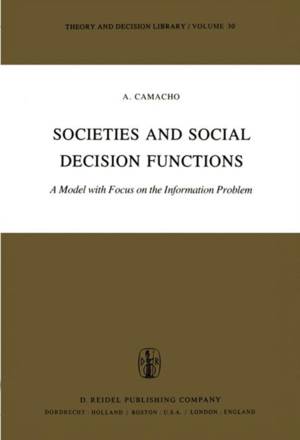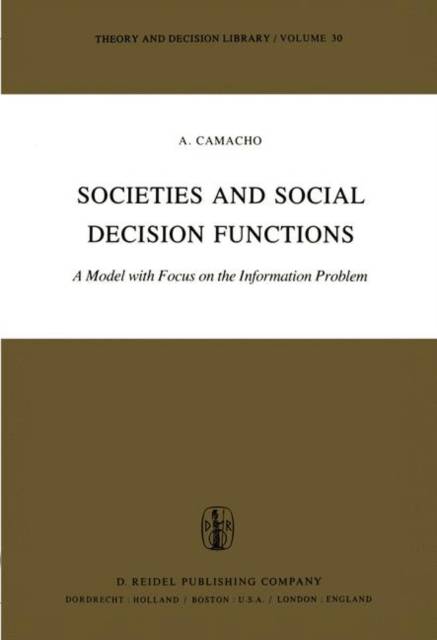
- Afhalen na 1 uur in een winkel met voorraad
- Gratis thuislevering in België vanaf € 30
- Ruim aanbod met 7 miljoen producten
- Afhalen na 1 uur in een winkel met voorraad
- Gratis thuislevering in België vanaf € 30
- Ruim aanbod met 7 miljoen producten
Zoeken
€ 79,19
+ 158 punten
Uitvoering
Omschrijving
A model is an idealization. It is an abstract representation of a given perceived reality. To construct a model one abstracts from the unimportant features of that reality and replaces it by a formal structure, whose properties, explicitly assumed or logically de- ducible from the stated assumptions, correspond to the interesting relationships of the reality being studied. The purpose of constructing a model is twofold: first, to help better understand a complex reality; second, to help make pre- dictions with regard to still unobserved phenomena. The first purpose will be satisfied if the constructor of the model is able to identify and disregard the unimportant features of the reality being studied and replaces this reality by an easier to understand formal structure. By applying then the techniques of mathematics and logic to this formal structure we might be able to reach conclusions with regard to still unobserved phenomena, which will be of help in making predictions.
Specificaties
Betrokkenen
- Auteur(s):
- Uitgeverij:
Inhoud
- Aantal bladzijden:
- 164
- Taal:
- Engels
- Reeks:
- Reeksnummer:
- nr. 30
Eigenschappen
- Productcode (EAN):
- 9789400978157
- Verschijningsdatum:
- 19/10/2011
- Uitvoering:
- Paperback
- Formaat:
- Trade paperback (VS)
- Afmetingen:
- 152 mm x 223 mm
- Gewicht:
- 248 g

Alleen bij Standaard Boekhandel
+ 158 punten op je klantenkaart van Standaard Boekhandel
Beoordelingen
We publiceren alleen reviews die voldoen aan de voorwaarden voor reviews. Bekijk onze voorwaarden voor reviews.








